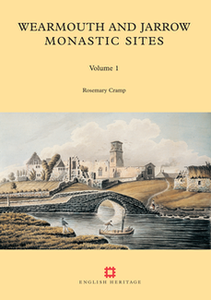English Heritage Archaeological Monographs
English Heritage, 2014. https://doi.org/10.5284/1028203. How to cite using this DOI
Data copyright © English Heritage unless otherwise stated
This work is licensed under the ADS Terms of Use and Access.
Primary contact
Historic England
The Engine House
Firefly Avenue
Swindon
SN2 2EH
Resource identifiers
- ADS Collection: 1416
- DOI:https://doi.org/10.5284/1028203
- How to cite using this DOI
Wearmouth and Jarrow Monastic Sites Volume 1
Cramp, R.
English Heritage (2005)
Abstract:

The Venerable Bede and the twin monastery of Wearmouth and Jarrow, Northumbria - an inseparable name and place. Founded by Benedict Biscop in the late 7th century the house achieved an international reputation from the fame of its most renowned inmate, Bede - theologian and historian. Destroyed in the mid-9th century, the house was refounded in the 11th and survives to this day as a seat of religious scholarship. Yet there was almost no archaeological knowledge of the site until the excavations undertaken by Professor Rosemary Cramp over three decades between 1959 and 1988. This book is the definitive report on the excavations. The evidence proved, as said in early texts, that the founder did indeed build in stone 'in the Roman manner', and the data give important insights into the evolution of monastic plans in the Christian West at a time when little was built in stone except churches, pre-dating the Carolingian Revival. The evidence reveals the economic basis and international contacts maintained by the monastery, including exotic pottery and the greatest quantity of 7th - 8th-century coloured window glass from any site of comparable date in Europe. From 11th-century and later monasteries, the earliest Norman religious houses in the region, the data elucidate the changing local and regional economies, and the cemeteries provide long-term demographic evidence from the Early Christian period to the 19th century. Using the archaeological evidence alongside exhaustive research of the historical records and archives, Professor Cramp and her colleagues here provide the most authoritative study of these two long-lived religious establishments.
Download monograph
| Wearmouth and Jarrow Monastic Sites Volume 1, Cramp, R., English Heritage (2005), ISBN: 9781848022188 | 85 Mb |





